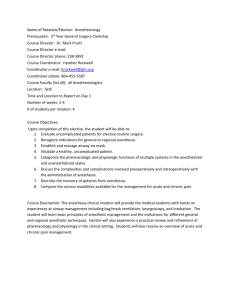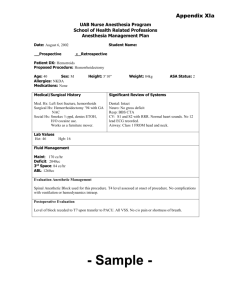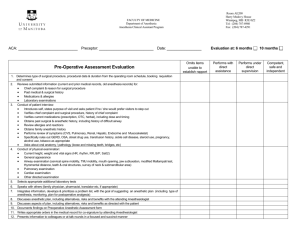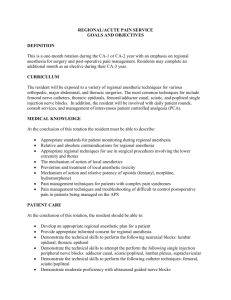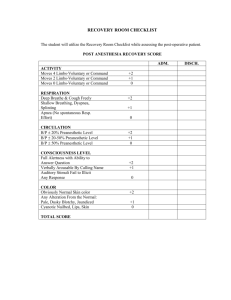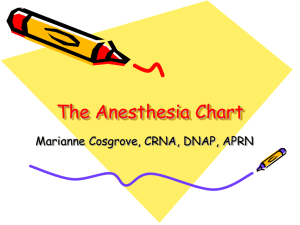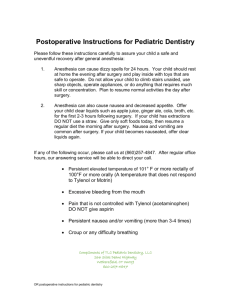AADR ABSTRACT - Deep Blue
advertisement
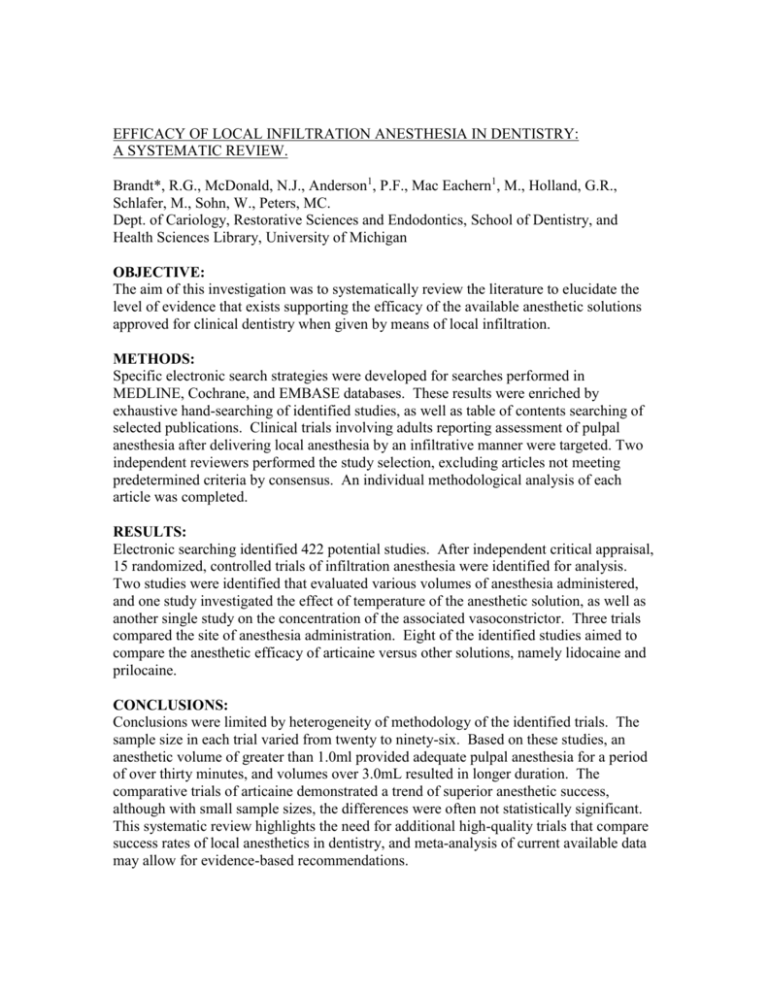
EFFICACY OF LOCAL INFILTRATION ANESTHESIA IN DENTISTRY: A SYSTEMATIC REVIEW. Brandt*, R.G., McDonald, N.J., Anderson1, P.F., Mac Eachern1, M., Holland, G.R., Schlafer, M., Sohn, W., Peters, MC. Dept. of Cariology, Restorative Sciences and Endodontics, School of Dentistry, and Health Sciences Library, University of Michigan OBJECTIVE: The aim of this investigation was to systematically review the literature to elucidate the level of evidence that exists supporting the efficacy of the available anesthetic solutions approved for clinical dentistry when given by means of local infiltration. METHODS: Specific electronic search strategies were developed for searches performed in MEDLINE, Cochrane, and EMBASE databases. These results were enriched by exhaustive hand-searching of identified studies, as well as table of contents searching of selected publications. Clinical trials involving adults reporting assessment of pulpal anesthesia after delivering local anesthesia by an infiltrative manner were targeted. Two independent reviewers performed the study selection, excluding articles not meeting predetermined criteria by consensus. An individual methodological analysis of each article was completed. RESULTS: Electronic searching identified 422 potential studies. After independent critical appraisal, 15 randomized, controlled trials of infiltration anesthesia were identified for analysis. Two studies were identified that evaluated various volumes of anesthesia administered, and one study investigated the effect of temperature of the anesthetic solution, as well as another single study on the concentration of the associated vasoconstrictor. Three trials compared the site of anesthesia administration. Eight of the identified studies aimed to compare the anesthetic efficacy of articaine versus other solutions, namely lidocaine and prilocaine. CONCLUSIONS: Conclusions were limited by heterogeneity of methodology of the identified trials. The sample size in each trial varied from twenty to ninety-six. Based on these studies, an anesthetic volume of greater than 1.0ml provided adequate pulpal anesthesia for a period of over thirty minutes, and volumes over 3.0mL resulted in longer duration. The comparative trials of articaine demonstrated a trend of superior anesthetic success, although with small sample sizes, the differences were often not statistically significant. This systematic review highlights the need for additional high-quality trials that compare success rates of local anesthetics in dentistry, and meta-analysis of current available data may allow for evidence-based recommendations.

